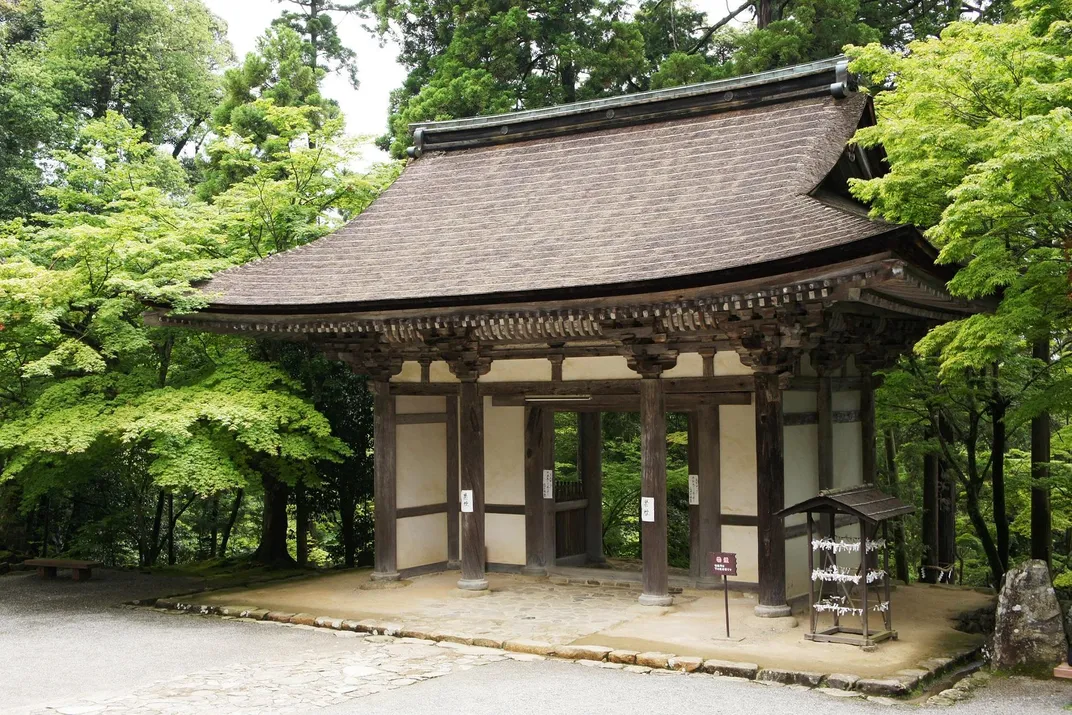These Newly Discovered Buddhist Temple Paintings May Be Among Japan’s Oldest
Art historians used infrared photography to identify images that could date to around 685 A.D.
:focal(397x147:398x148)/https://tf-cmsv2-smithsonianmag-media.s3.amazonaws.com/filer/6f/d1/6fd1311c-57e3-4dd1-98e2-bb131d26210f/buddhist_temple.jpg)
Researchers surveying a temple in Japan’s Shiga Prefecture have discovered long-hidden paintings of eight Buddhist saints that could date back more than 1,300 years, report Jiro Tsutsui and Yoshito Watari for the Asahi Shimbun.
The team used infrared photography to identify soot-obscured paintings on two pillars in the Saimyoji temple in Kora, about 40 miles northeast of Kyoto. Per a statement, art historian Noriaki Ajima of Hiroshima University was aware of the works’ existence prior to the new find. But he’d previously assumed that the images dated to the Edo period, which spanned 1603 to 1867.
When the temple underwent renovations last year, its chief priest invited Ajima and his colleagues to investigate the paintings further. The scholars’ assessment suggested that the works may date to the later part of the Asuka period, which lasted from 538 to 794 A.D., according to the Metropolitan Museum of Art’s Heilbrunn Timeline of Art History.
“The first time I saw an infrared photograph, I was very surprised to find that the quality of the radiation was completely different from the ones I had studied since the Heian era [794–1185],” says Ajima in the statement, “and after a detailed investigation, I came to the conclusion that it was the Asuka era.”
Each of the two pillars features paintings of four bodhisattvas—central figures in Buddhism who delay personal enlightenment in order to offer earthbound worshipers salvation. The paintings, which measure about 28 inches tall, were reportedly painted in bright colors, including blue, green and vermilion, reports the Kyoto Shimbun.

Ajima says clues in the way the artist depicted the saints’ inner ears and palm creases, as well as their clothing, suggest the likenesses could be the country’s second-oldest known paintings, postdating only seventh-century murals located at the Horyu-ji temple, a Unesco World Heritage site in Nara Prefecture.
At least one scholar disagrees with the team’s findings, however. As Yoshitaka Ariga of the Tokyo University of the Arts tells the Asahi Shimbun, “It is an important discovery that Buddhist paintings were drawn on columns, but it’s unthinkable that they are from the Asuka Period, given the theme and composition of the paintings.”
Ariga adds, “Researchers need to study further to determine when and why the paintings were drawn.”
Established on the orders of Emperor Ninmyō in 834 A.D., Saimyoji boasts an array of impressive architectural features, including a three-story pagoda dated to the Kamakura period (circa 1192–1333), a scenic garden and a main hall constructed without the use of nails. An elaborate mural illustrating the Lotus Sutra, or scripture, adorns the pagoda’s interior and is thought to be the only surviving mural painting from the period.
“The main hall itself is a national treasure,” Saimyoji’s chief priest, Hidekatsu Nakano, tells the Kyoto Shimbun, per Google Translate, “but I want you to pay attention to the paintings.”
/https://tf-cmsv2-smithsonianmag-media.s3.amazonaws.com/accounts/headshot/Livia_lg_thumbnail.png)
/https://tf-cmsv2-smithsonianmag-media.s3.amazonaws.com/accounts/headshot/Livia_lg_thumbnail.png)